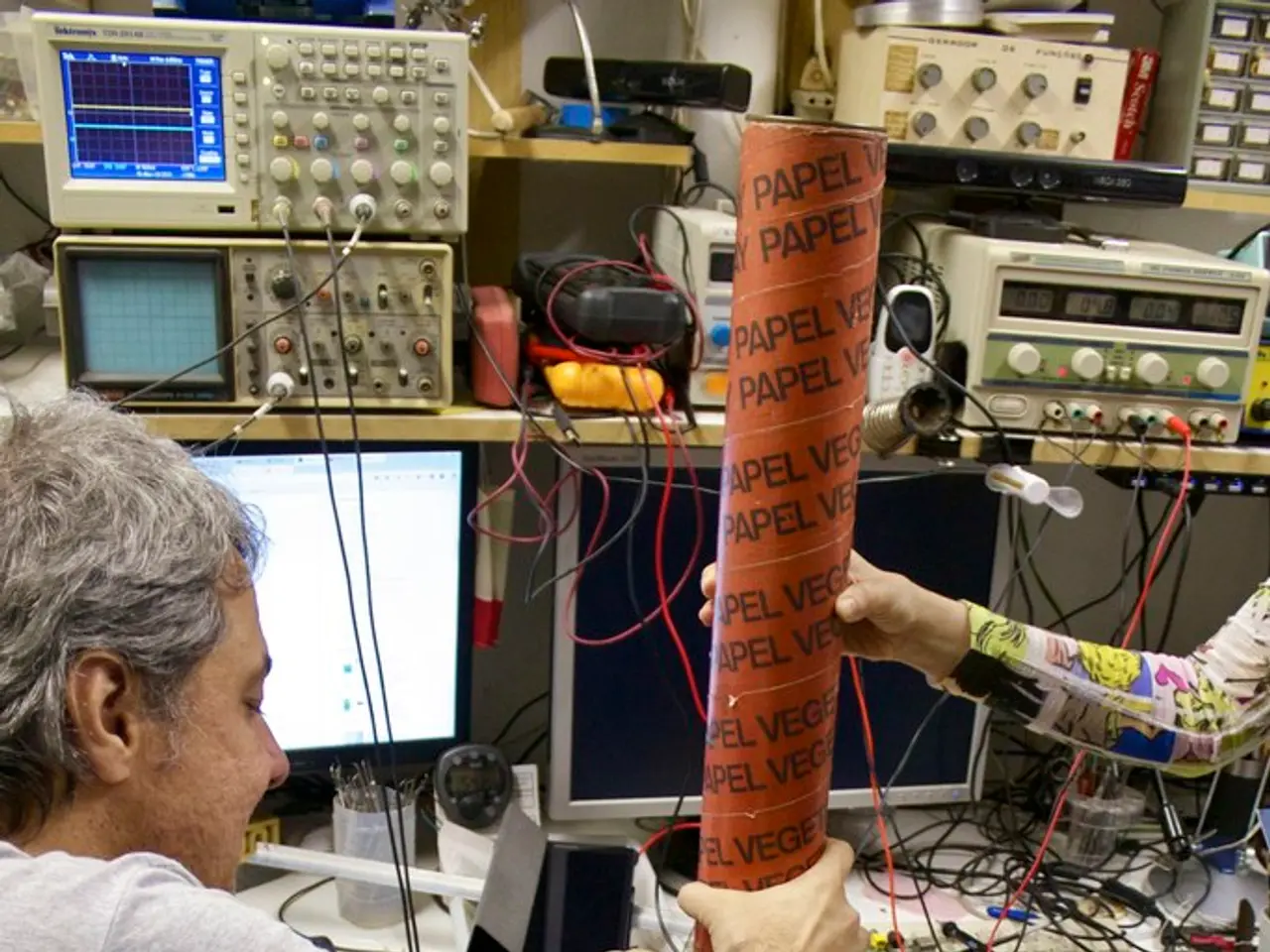BCI Explanation: Direct Interlinking of Brain and Computers Unravelled
In the realm of technology, brain-computer interfaces (BCIs) are making significant strides, particularly in the non-invasive sector. These devices enable the human brain to communicate with and control external software or hardware without the need for surgical implants.
Recent advancements in non-invasive BCIs include improved signal processing, thanks to the integration of artificial intelligence and machine learning algorithms. This innovation has led to more accurate and reliable outputs, even in noisy environments.
Researchers at Carnegie Mellon University have made a significant breakthrough with an EEG-based BCI that can control a robotic hand in real-time, decoding individual finger movements. Meanwhile, companies like Meta are achieving high accuracy in decoding imagined keystrokes using external EEG sensors, with systems reaching up to 80% accuracy in "mind typing."
The future of non-invasive BCIs holds immense promise across various fields. In the medical sphere, BCIs can assist in restoring motor functions for paralyzed individuals and aid in the treatment of neurological disorders. In the gaming and entertainment industries, these technologies are being explored to create immersive experiences that respond to users' thoughts and emotions.
BCIs can also serve as communication aids for people with speech or language impairments, providing a means of communication through thought-controlled interfaces. In the realm of mental wellness, wearable BCIs, such as EEG headsets, are gaining traction for applications in neurofeedback training.
However, challenges remain, including scalability, usability, ethics, and standards. The integration of BCIs into mainstream technology will require addressing these issues to ensure widespread adoption and responsible use. Ongoing research aims to improve the spatial resolution of EEG-based systems to enhance their clinical relevance.
The market for BCIs is expected to triple in size from almost $2 billion in 2023 to $6.2 billion by the end of the decade. Understanding the brain is being facilitated by BCIs, creating a direct channel to our thoughts and a process to decode its language.
Currently, fewer than 40 people worldwide have implanted BCIs, according to the U.S. Government Accountability Office. However, companies like Neurable are developing non-invasive BCIs in the form of headphones. The graphene chip, for instance, sends more powerful signals compared to the metallic chips typically used in BCIs and could later be applied to patients with Parkinson's disease.
BCIs can also be used for cognitive enhancement, allowing users to train their brains in real-time. Common use cases include controlling robotic limbs and wheelchairs, using wireless headsets to boost productivity and enhance focus, and using BCIs for computer-augmented communication for non-verbal individuals.
Examples of BCIs include Neuralink's Brainchip, Paradromics' Connexus, Neurable's BCI-enhanced headphones, Precision Neuroscience's Electrode-Packed Film, and Synchron's Endovascular Alloy Chip. Whether invasive or non-invasive, these technologies are poised to revolutionise the way we interact with technology and the world around us.
Science and health-and-wellness converge as researchers explore the potential of non-invasive brain-computer interfaces (BCIs) in medical-conditions, such as restoring motor functions for paralyzed individuals or providing communication aids for people with speech impairments. Fueled by advancements in technology like artificial intelligence and machine learning, these BCIs offer remarkable precision and reliability, even in noisy environments.




